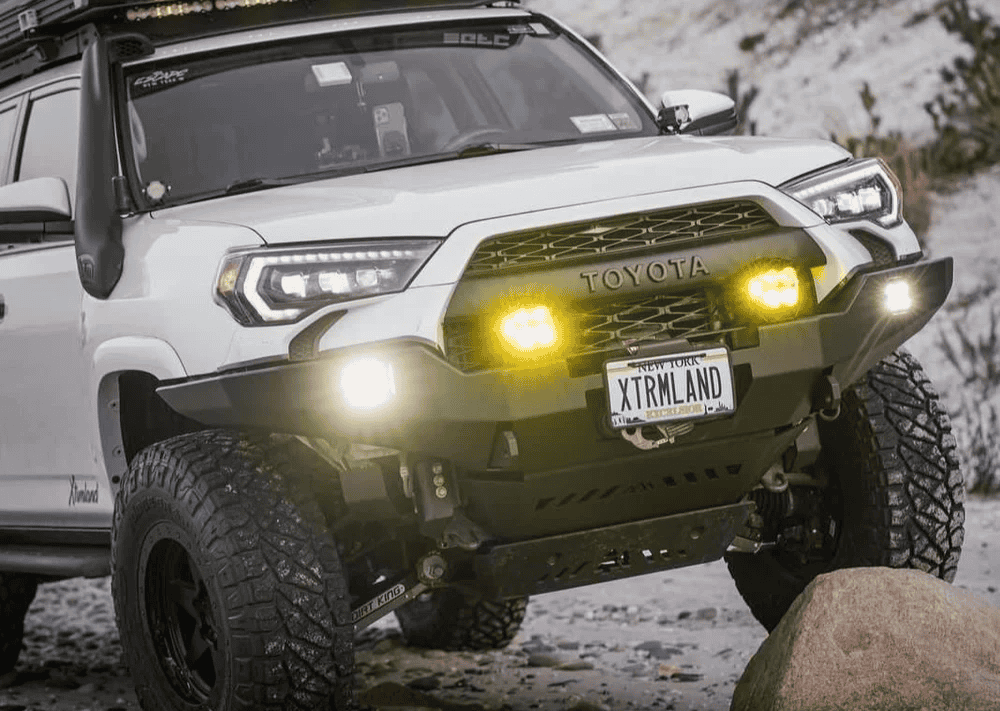Overland Vehicles

Before cutting the first board, start with numbers. Curb weight, payload, axle ratings, and tongue weight limits set your envelope. A diy truck camper build adds structure, gear, water, and passengers, so weigh the truck empty and track every pound you add. Keep heavy items low and between the axles to reduce sway and braking distance. Aim for even side to side balance and verify tire load index matches your final weight.
A flat deck changes how you plan. With a cab and chassis or a converted tray, you gain a wider, rectangular footprint. That allows a true queen bed width, tall drawers, and exterior boxes for recovery gear and fuel. An overland camper truck benefits from clean airflow and sealed dust control, so think about smooth exterior lines, gasketed doors, and strategic vents.
Power and water are the backbone of comfort. Estimate daily watt hours and gallons used, then size batteries, solar, alternator charging, and tanks accordingly. A simple rule of thumb is to multiply your average daily draw by two to cover cloudy days and idle time. Keep plumbing runs short, protect lines from road debris, and insulate to avoid freezing at elevation.
The phrase diy flatbed camper covers many approaches, from a removable canopy to a fully integrated box. Choose a path that matches terrain, trip length, and maintenance expectations. Sketch the living flow first: where you cook, sleep, store wet gear, and step in with muddy boots. Prioritize ventilation over gadgets. Cross breeze plus a roof fan keeps moisture in check and preserves insulation performance.
Half ton trucks reach payload limits quickly with a camper. Many builders choose three quarter ton or one ton platforms for capacity and braking. Progressive leaf packs or air helper springs can fine tune ride height, but suspension should support weight without relying solely on air. Shocks with proper damping improve control on washboard and reduce interior rattles.
A flatbed camper build can be light and strong with the right materials. Plywood with sealed edges, aluminum extrusion, and composite panels each have pros. Plywood is simple to work and repair. Aluminum frames save weight but require careful isolation to avoid noise and galvanic issues. Closed cell foam resists moisture, while mineral wool offers fire resistance and sound control. Seal every penetration and use vapor aware construction in cold climates.
The interface between camper and truck is mission critical. A flatbed truck camper conversion should isolate the living box from frame twist using bushings or a flexible subframe. Rigid mounts can crack cabinetry on uneven trails. Use nylock fasteners, thread locker, and serviceable access points. Protect wiring and hoses with abrasion sleeves and leave drip loops to shed water away from connectors.
Layout and envelope: Tape your proposed interior on the deck and walk through tasks. Confirm bed height clears gear below and sitting height works under the ceiling. A diy flatbed truck camper gains headroom when you keep utilities low and central.
Structure first: Build or install the box with square, plumb corners. Pre plan wire chases and plumbing runs before skinning walls. Label circuits and leave extra slack for maintenance.
Electrical system: Size a battery to daily use and charging sources. Many overland setups combine alternator charging with solar. Place fuses within reach and follow color coding. Keep high current cables short and properly crimped.
Water and heat: Fresh, grey, and hot water systems should be simple and serviceable. Place the pump near the tank, use flexible hoses with clamps, and install a strainer. Vent heaters outdoors and follow manufacturer clearances. Carbon monoxide and smoke alarms are non negotiable.
Ventilation and condensation control: A roof fan paired with a low intake vent moves moist air out. Use thermal breaks on metal surfaces to avoid cold spots. Drying space for wet gear keeps bedding fresh.
Finishes and field serviceability: Choose latches that will not open on washboard. Use durable surfaces that clean easily. Pack a small tool kit that can remove panels and reach fuses without tearing the interior apart.
Throughout the process, sanity check the mission. An overland camper truck should feel predictable on pavement and composed on washboard. If the truck sags or brakes feel long, remove weight and reassess. Safety trumps every nice to have.
Building a diy flatbed truck camper rewards patience, measuring twice, and testing with shakedown trips. Start close to home, note what you never used, and trim. The most reliable rigs carry only what earns its place.
Whether you plan months on the road or short strikes to a trailhead, the fundamentals do not change. Balanced weight, clean electrical, simple plumbing, and a mount that flexes with the frame will carry you farther than any accessory.
When you decide that your time is better spent exploring than iterating, there is another path. OZK Customs builds complete and partial upfits that capture the same principles you have researched here, executed with pro grade fabrication and finish. Explore our overland rigs for proven layouts and capabilities that stay comfortable off grid. If you have a flat deck and want a purpose built system around it, our custom overland upfit services deliver integrated power, water, and storage that respect payload and serviceability. New to our shop and want to see how we work, start with why choose OZK Customs and learn how we plan, build, and hand off rigs that are road ready from day one.
Ready to trade sketches for a finished key turn build. Share your truck platform, travel style, and must haves. Our Fayetteville team will propose a build that fits your weight targets, supports your favorite routes, and feels dialed the first time you turn the key.
Ready for a purpose built overland truck without the trial and error. Our team designs and builds complete and partial upfits that balance payload, comfort, and reliability. Share your goals and we will map a build that works on day one.
ADDRESS:
6159 E Huntsville Rd, Fayetteville, AR 72701
PHONE:
(479) 326-9200
EMAIL:
info@ozkvans.com